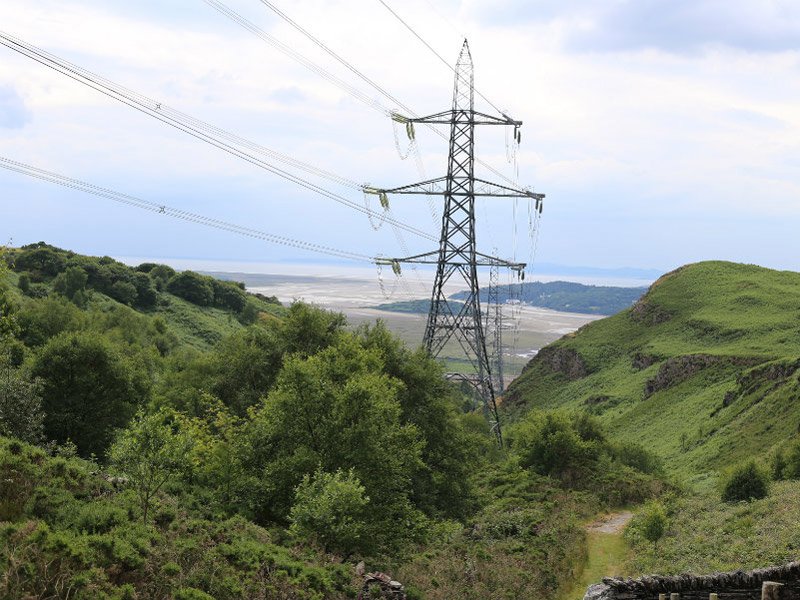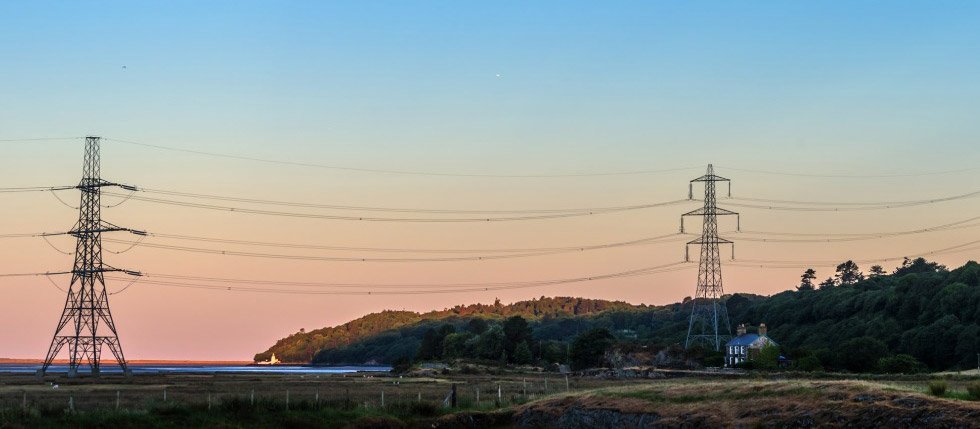Snowdonia VIP
The Visual Impact Provision project in the Snowdonia National Park in the UK aims to reduce the visual impact of National Grid’s overhead line across the Dwyryd Estuary near Porthmadog.
A project to transform a nationally significant Snowdonia landscape is one step closer to being realised following a landmark decision by local planning authorities.
The Snowdonia National Park Authority and Gwynedd Council have granted National Grid’s Snowdonia Visual Impact Provision (VIP) project planning permission (subject to a legal agreement) to build tunnel head houses on the edge of the national park.
The buildings will house the opening of the tunnel which will carry infrastructure under the estuary. This will enable the eventual removal of the ten pylons that run across it.
As part of National Grid’s Visual Impact Provision (VIP) project, the proposals will remove ten pylons and an approximately 3km stretch of existing overhead line, which runs from Minffordd, across the Dwyryd Estuary, and continues eastwards to just beyond Cilfor, with cables buried in a tunnel deep under the estuary.
The project plans to enhance the popular beauty spot for the many local people and visitors who regularly enjoy it.
As the project area spans two Planning Authorities, planning permission for a tunnel head house on the western side of the estuary was decided by the Gwynedd Council’s Planning Committee following approval by the Snowdonia National Park Authority Planning Committee, for works at the eastern side of the estuary, at the beginning of July.
Since the project first began in 2015, National Grid has been working together with local stakeholders to develop its proposals, including the Snowdonia National Park Authority, Gwynedd Council, Cadw, Natural Resources Wales, the National Trust and the town and community councils surrounding the estuary.
Snowdonia is the third of National Grid’s VIP projects to take such a positive step forward, with proposals for projects in the Peak District National Park and Dorset AONB receiving planning consent already.
Michelle Clark, National Grid’s VIP Project Manager said, “We’re delighted that the Snowdonia VIP Project has been granted planning permission for our proposals to reduce the visual impact of a 3km section of overhead line across the Dwyryd Estuary. This is a major landmark in the project’s progress, and we would like to thank the Park Authority and Gwynedd Council for the constructive advice it has given us throughout the process. From the outset our proposals have been very much shaped by stakeholders and we now have the positive outcome we had hoped for.”
Chris Baines, the Chair of the VIP project’s independent Stakeholder Advisory Group said: “I am delighted that following this important decision, we are another step closer to the removal of these power lines. The effect will be transformational, and locals and visitors alike will be able to enjoy the unspoiled splendour of the Dwyryd Estuary for the first time in generations. The project is the culmination of five years of teamwork and consultation between National Grid, local and national stakeholders and crucially the local community.”
To find out more about the project, please visit: snowdonia.nationalgrid.co.uk
View the Visual Impact Provision Policy
Source and images: snowdonia.nationalgrid.co.uk

Join Now
Get Involved
The only way to make a difference is to get involved. It’s easy to sit back and wait for others to do something but when you are staring at 75-85m towers in a few years time, you will kicking yourself for not doing something when you had the chance. This is OUR only chance to stop these towers, so get involved now.
Welcome to the home of Darley Power Fight. A group of residents in Darley, Coimadai and Merrimu, united against high voltage transmission towers passing through our backyard. We came together through the realisation the transmission line will divide a narrow corridor between Darley and the Lerderderg State Park; altering landscape character, causing widespread damage to critical habitat for threatened species, increasing fire risk to the Park and thousands of residents, destroy our visual amenity, harm local agriculture and will impact businesses and property values. It will completely desecrate, in a few years, what nature has taken millions of years to create.



